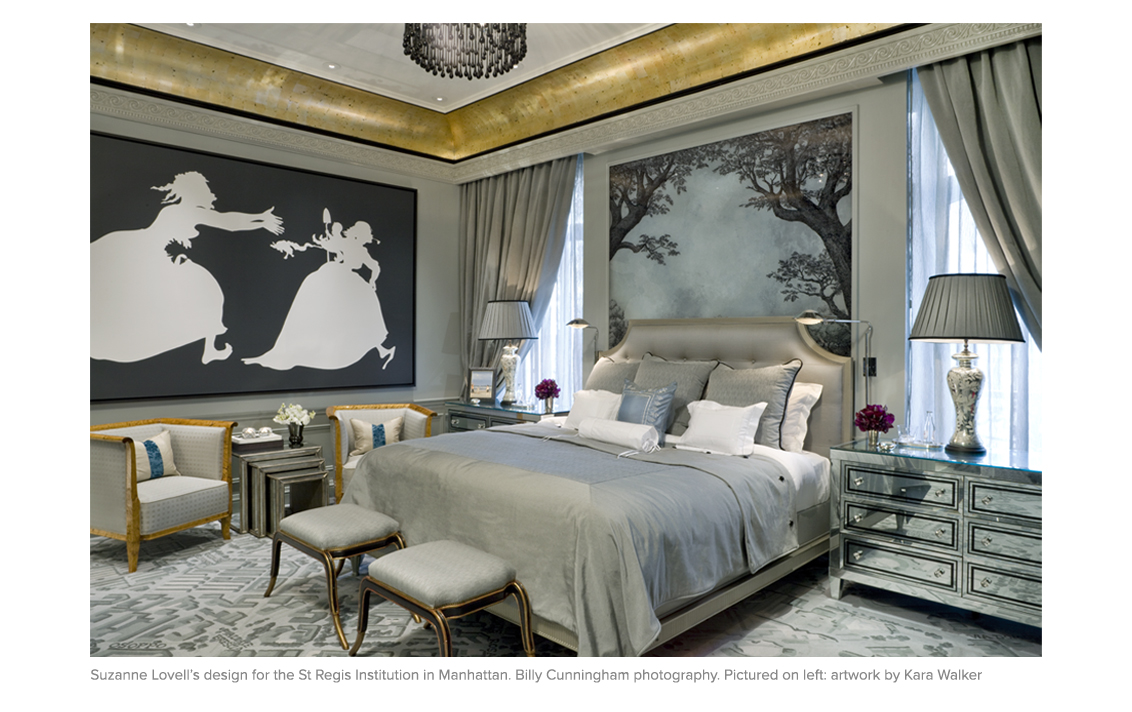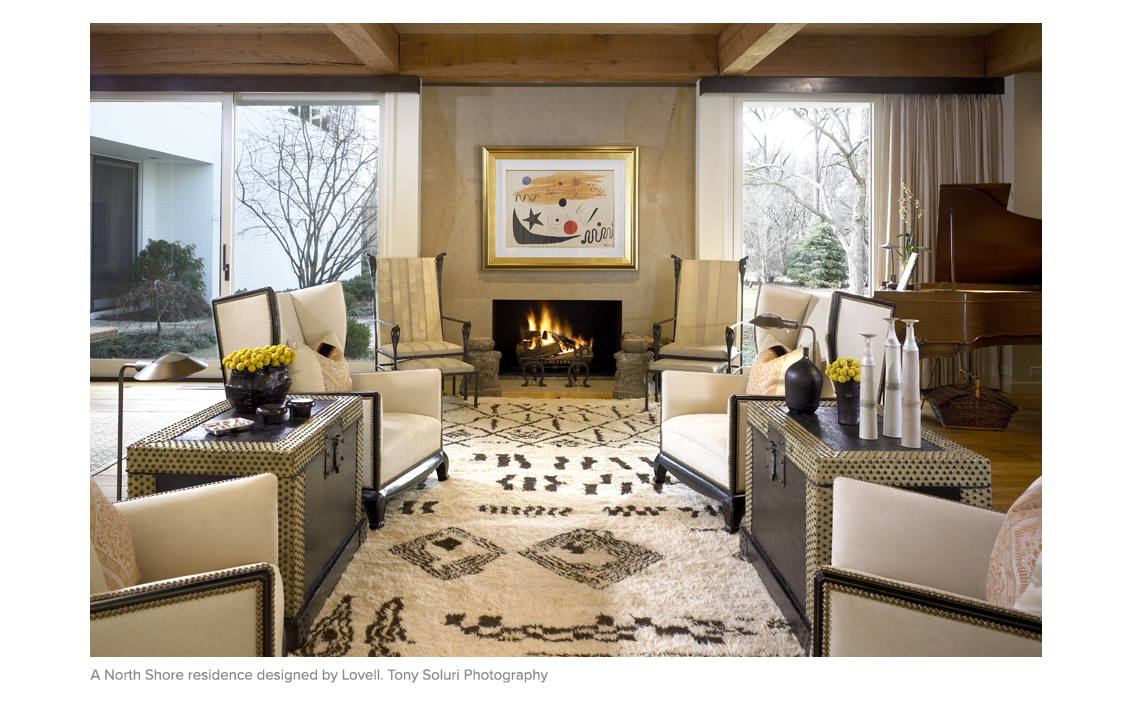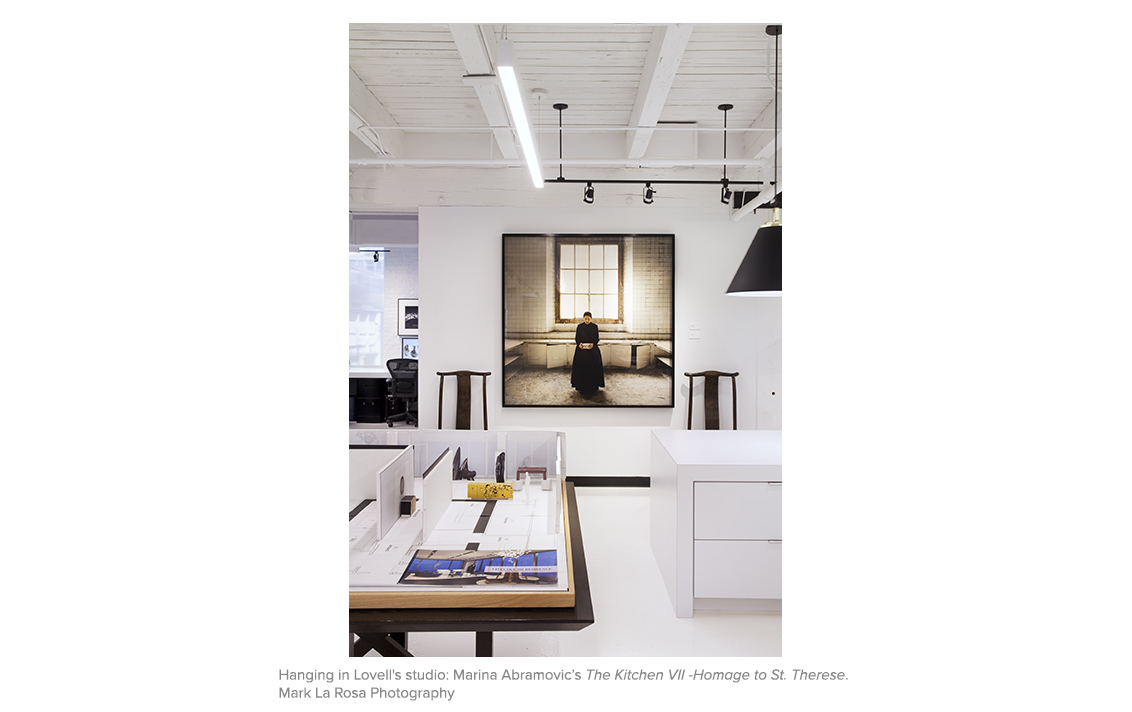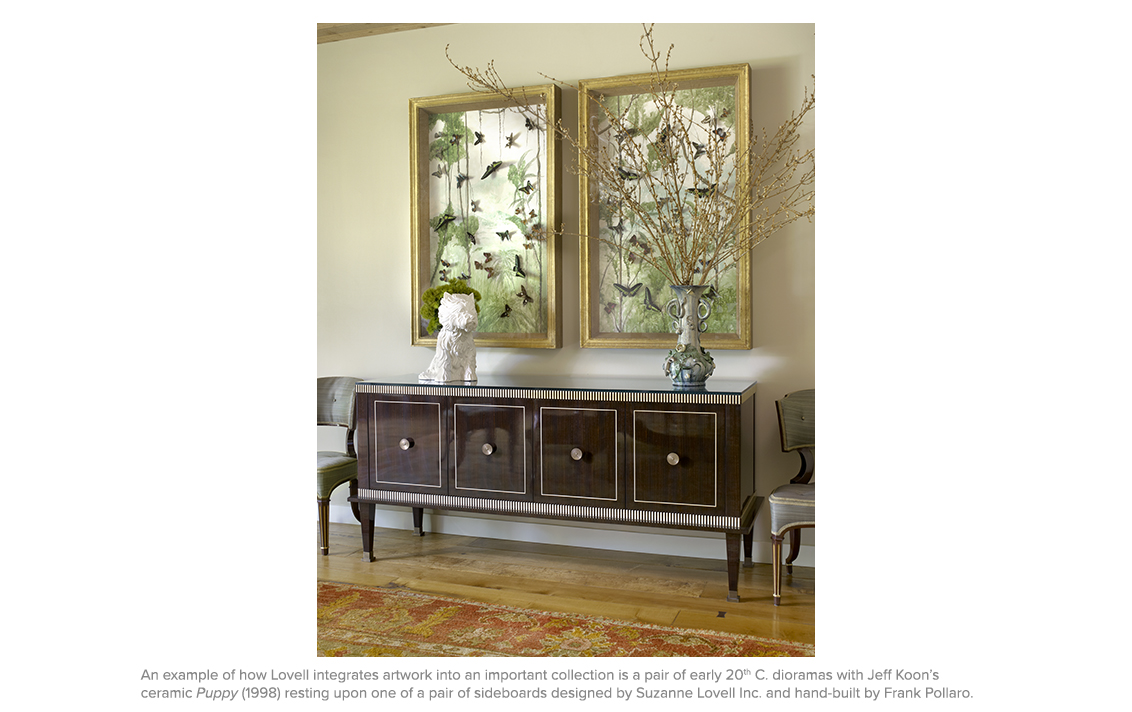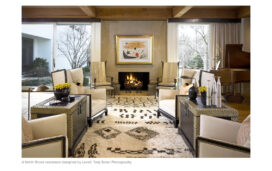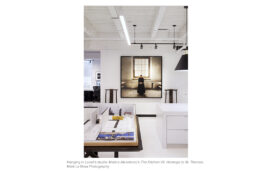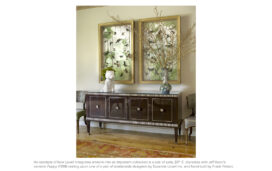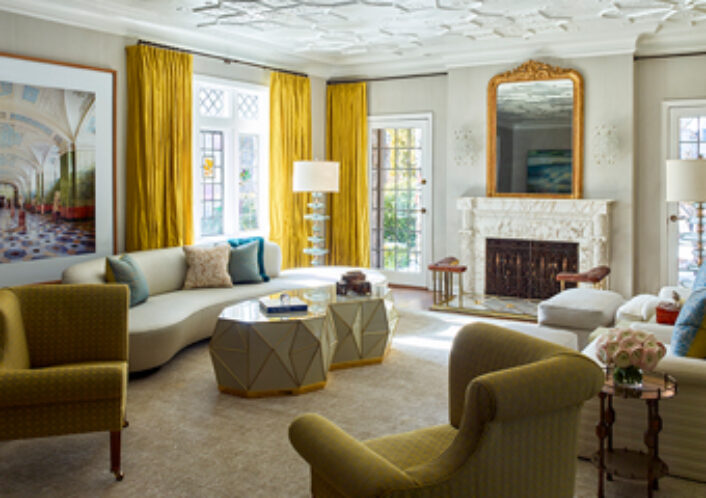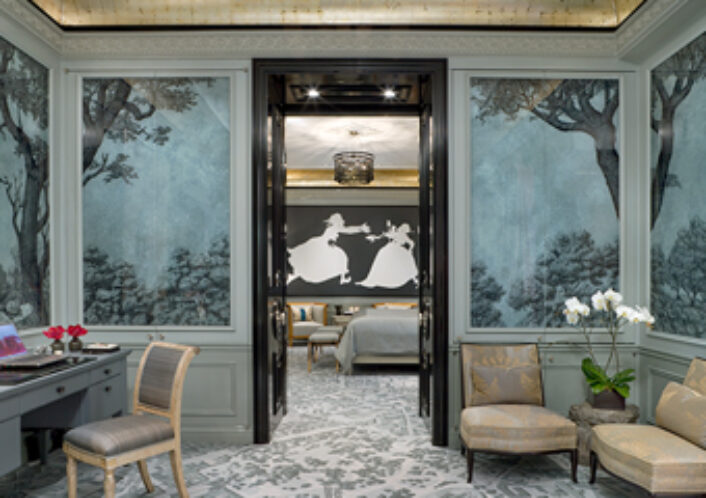Chicago Gallery News September 2020
Suzanne Lovell: Bringing Art History Home
Contemporary design professionals usually waste no time deflating that old adage that your art should match your drapes. Chicago-based, internationally known designer Suzanne Lovell is no exception. In fact, she is uniquely capable of helping clients not only find the art for their homes but to advise them on contemporary artists and elements of the market. Her own firm, which she founded in 1985, now has a division devoted to fine art, run by colleague Kristin Murphy Romanski. Lovell wrote the book, literally, on living with art and design: Artistic Interiors: Designing with Fine Art Collections, was published almost a decade ago, in 2011. Its main theme is how central art is in her own design work as well as in life at home. In a time when all of us are spending a great deal of time at home, and nowhere else, this has never been more apparent. So, what is Lovell doing to continue to bring art to her clients as well as to stay abreast of the contemporary art world? We had the chance to ask her recently.
CGN: What comes first, the design or the art?
Suzanne Lovell: Architecture comes first. Then, the moments of pause are the moments for art to create magic.
We start with a conversation about what the client owns or would like to acquire, and we create the architectural language and experience of space to best enhance their experience with their artwork. That’s why we merge in the collecting of art very early in the process, because we are either taking their art, and including it in their environment in appropriate ways, or helping them think about the art that’s going to be in the magic of their home. Once they realize that we are doing that expression of them, they want it echoed in another part of their home.
Design and furniture support those spaces and their function. Sofas are an afterthought.
CGN: Do you have an example where you designed a room that best showcases the art? What is the relationship between the art and the space?
SL: There’s no question we adjust the architecture to accommodate the piece of art first. We always highlight the key opportunities for art as we start conversations about collecting with context and placement. In the case of the Manhattan installation in the St. Regis Institution, we preserved the Beaux-Arts architecture, because that was the right thing to do. We ended up expanding the width of the mill work panels of art to showcase a Kara Walker piece. As an architect/designer, you are referencing and respecting the history [of the building], but you are also putting into the history the contemporary story and message.
CGN: What sets your art advisory business apart, especially up against the stereotype of decorating with art?
SL: Definitely our approach toward research, our intellectual formation of why certain collections come together for certain clients, and our constant exploration/travel to view art all over the world. We feel responsible to the art community that supports our efforts to educate our clients as on every piece of art we suggest they might like to collect, and why. It is definitely NOT about decorating.
Kristin’s helped us reach a certain level in the art world in terms of understanding art. That’s a very difficult world to be very welcomed into, particularly when you’re a decorator and architect. We strove really hard for that not to be the reference. While we feel responsible to our clients, the galleries realize we have placement and we have intelligence, and so they want to help us collect the pieces of the great artists that they represent.
CGN: Can you share some tips for successfully mixing contemporary art in with a range of tastes and styles?
SL: I’m absolutely a firm believer that you collect what you strongly believe in. I don’t like the statement “buy the art you love.” It is not like that. Rather, “What are the expressions of “you” in the artwork that you are collecting.” In other words, collect what you feel strongly about as it will always find a place in your definition of home.
CGN: Globally, the concept of ‘home’ has drastically changed. How would you define the experience today?
SL: We are very conscious of the fact that people all need and want a more relaxed, easy and happy environment, because they are there all the time. Space is important and each individual in the family needs to be considered as the function is now required to be for 24 hours a day. More natural materials that share the hand of craft is certainly coming into our work. We enjoy the maker and his or her story as it engages with the world of art in an honest extension of creativity.
CGN: How does that translate into your work and the materials you use?
SL: The home will always be for me, as Louis Kahn said, “The room is not only the beginning of architecture; it is an extension of self…a choosing conscious individual.”
CGN: What art currently hangs in your studio?
SL: We have art by Jimmy Robert and Greg Stone, and, from my personal collection there’s also Marina Abramovic’s The Kitchen VII -Homage to St. Therese.
CGN: How has your business changed since the pandemic? What are you working on now?
SL: We have of course gone to a remote existence as a team. That has been quite an adjustment as we all know that creation is a physical endeavor. It is something that you just can’t get over the machine. Being in the office is super important, and yet we are staggering our returns to the office to inspire the wonderful work we are engaged in currently. At the same time, we’ve challenged ourselves to create a three-dimensional space to help clients visualize the space.
We are busy in Naples, in New York, in Glencoe and in South Carolina with clients that we refer to as patrons as our engagement with them is often for multiple homes. Managing their art works and the moving and installation thereof, not to mention the cataloging, is very integral to the service we provide.
CGN: Can you tell me about some of your most recent fine art acquisition/art restoration projects?
SL: We installed a phenomenal Cecily Brown triptych for a client in one home and a wonderful Renoir in another of their residences. Another one of our most enthusiastic moments was a trip Kristin and I made with a client whom has become a strong collector of Joseph Walsh’s work. We went to Cork, Ireland to visit Walsh, who is bringing together makers in Ireland and raising them up. His furniture is known to be “beautiful enough for a blind man to see.”
I also think the most exciting placement we have ever made, is certainly the large Kara Walker that we installed in Manhattan.
CGN: How do you and your team approach a project? What do you look for/what kind of conversations do you have when visualizing a space?
SL: We talk about how they wish to use this particular piece of property. We discuss imagery that connects to those definitions. We make an effort to understand what their dream is of this location. I like to say it is about them, and my responsibility is to create the most perfect version of that dream, professionally. As a team with the patron, we spend a lot of time at the beginning of every project selecting the architectural materials that are the backbone of the residence’s definition. Wood and stone, walls and floor, the surrounds are the core issue of any design. This is the palette to which one adds.
By Anna Dobrowolski
